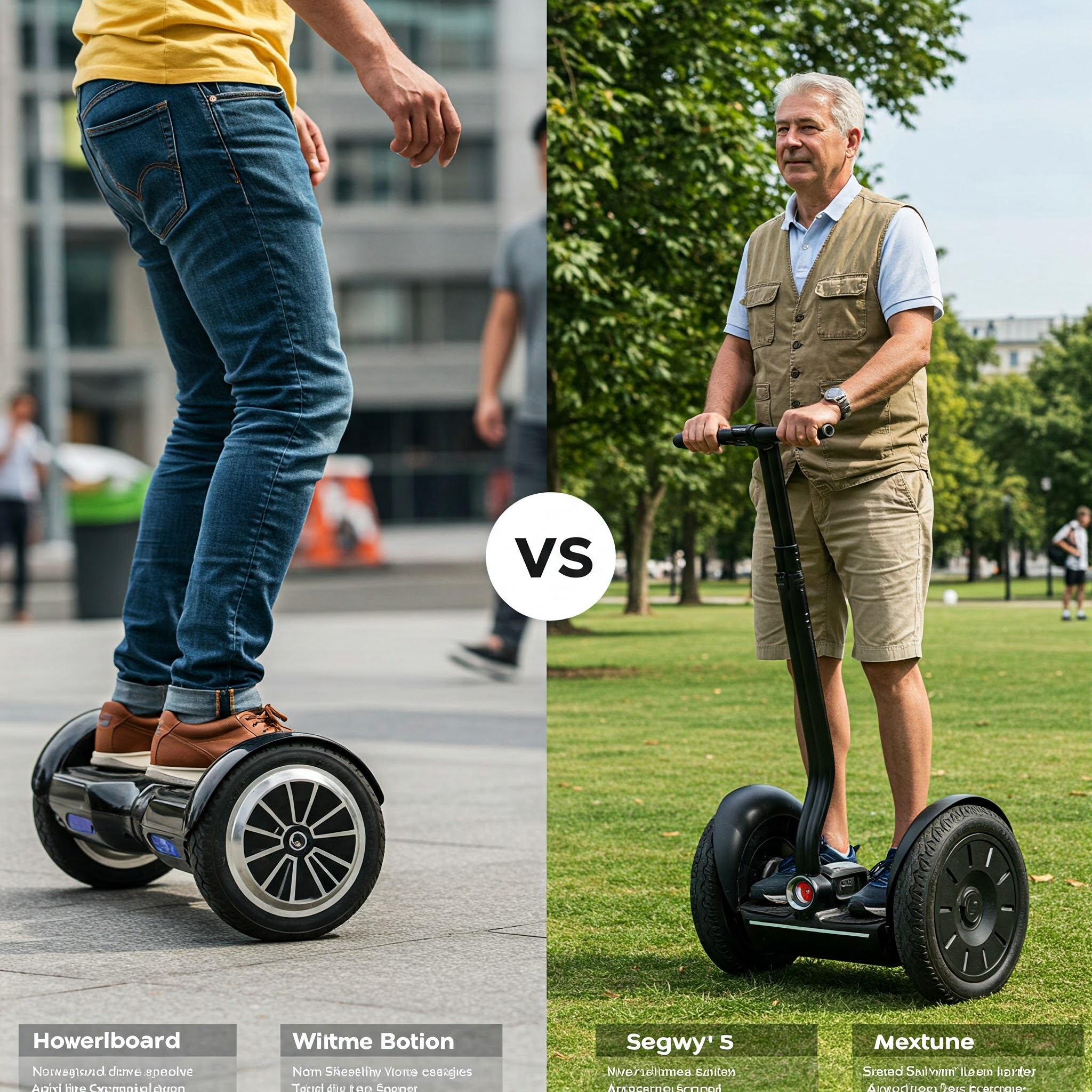The Electric Glide: hoverboard vs. Segway - Which Reigns Supreme?
The realm of personal electric transportation has exploded in recent years, offering a plethora of options for zipping around urban landscapes or simply enjoying a leisurely cruise. Two prominent players in this arena are the hoverboard and the Segway. While both aim to provide a fun and efficient mode of movement, they differ significantly in design, functionality, and overall experience. Understanding these distinctions is key when deciding between a hoverboard and Segway.
The most immediately noticeable difference lies in their construction. A hoverboard, also known as a self-balancing scooter, is essentially a platform with two wheels and no handlebars. Riders control movement and direction by shifting their weight. This hands-free operation contributes to its sleek and minimalist appeal.
In contrast, a Segway features a more substantial build with a central column and handlebars that the rider grips for balance and steering. This design provides a more intuitive and arguably more stable riding experience, particularly for beginners.
One crucial aspect to consider is the power source. Both devices rely on batteries, and the segway hoverboard battery (often referring to the Segway's battery, as "hoverboard battery" is the more common term for the other device) is typically designed for longer range and higher power output compared to many standard hoverboards. This is often due to the Segway's larger size and intended use for longer commutes or tours. However, advancements in hoverboard to segway technology, particularly in battery capacity and motor efficiency, are gradually closing this gap.
The learning curve also differs significantly. Mastering a hoverboard requires a degree of balance and coordination, often taking some practice to feel comfortable and in control. The Segway, with its handlebars providing stability, generally offers a quicker and easier learning experience. This makes it a more accessible option for a wider range of users, including those who might feel less confident with the free-balancing nature of a hoverboard.
Maneuverability is another key differentiator. Hoverboards, with their compact size and independent foot platforms, excel in tight spaces and offer a high degree of agility. They can easily navigate crowded sidewalks and perform quick turns. Segways, while stable, have a larger turning radius and can feel slightly less nimble in very congested areas.
Considering the intended use is crucial when choosing between a hoverboard or Segway. hoverboard are often favored for recreational use, short commutes, and simply having fun. Their portability and lighter weight make them easy to carry when not in use. Segways, on the other hand, are often employed for longer distances, security patrols, guided tours, and by individuals seeking a more stable and upright riding posture.
Safety is a paramount concern for any personal mobility device. The Segway's design, with its handlebars and wider platform, generally provides a greater sense of stability and control, which can translate to a perceived higher level of safety, especially at higher speeds. While hoverboard technology has improved significantly, early models faced safety concerns regarding battery quality and overheating. It's crucial to purchase hoverboard from reputable manufacturers that adhere to safety standards.
The evolution of both devices has been interesting. While the core concept of the Segway has remained relatively consistent, hoverboard have seen significant advancements in battery technology, motor power, and safety features. There have even been conceptual designs and products that attempt to bridge the gap between the two, hinting at a potential "hoverboard to Segway" evolution in terms of features and stability.
In conclusion, the choice between a hoverboard and a Segway ultimately depends on individual needs and preferences. If agility, portability, and a fun, free-gliding experience are priorities, a hoverboard might be the ideal choice. However, if stability, ease of learning, longer range, and a more upright riding posture are desired, the Segway offers a compelling alternative. Both devices represent exciting advancements in personal electric mobility and continue to evolve, offering unique ways to navigate our world.











